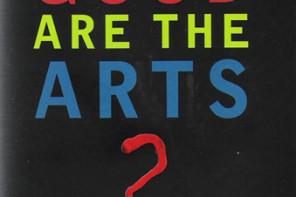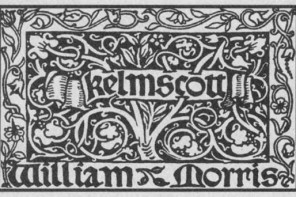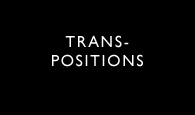This piece was modified from a blog entry for the Lausanne Global Conversation. It is published with the written consent of The Lausanne Movement.
The conversation on arts and mission is long overdue. It is not a new conversation as it received considerable attention in the mid-twentieth century. Missiologist Andrew F. Walls provides a brief but informative history of activity engaging non-western art born out of a Christian context in his essay The Western Discovery of Non-Western Art. The arts have, in more recent times, been showing up in a variety of faith-based settings and in the process have got a lot of us talking about the arts – including those in the world of missions.
However, I think it is fair to say that arts and mission are reluctant partners. I borrow this phrase from a work published a few years ago pointing out how art and religion have been at odds – particularly in the twentieth century.
Let me briefly suggest why there is a reluctance to bring together art and mission. Artists are commonly uncomfortable with the idea of carrying a specific agenda in their work. They don’t wish to preach through their art. Many who do mission work are intent on being clear and direct in their message while art is often unclear and indirect. Art can be ambiguous, something a person in missions would want to avoid. But there are some other reasons for the distance between art and mission. Two things specifically, the first relates to our understanding of spiritual life, the second to our theological assumptions.
It’s common among those of evangelical persuasion to hold to a spirituality that disengages us from the material world – a pietism focused on the inner life. Art, by contrast, is sensual and naturally engages the material world. Theologically we have tended to diminish the importance of the doctrine of creation and along with it the cultural mandate. We are called to be stewards of the created order, crafters and those who engage the imagination for a wide variety of purposes. These are callings that often get neglected in our desire to focus on redemption.
There are signs of change. Renewed interest in the arts is evident in faith communities around the globe. Arts pastors – unheard of 20 years ago – are a growing breed in the west at least. Many Asian churches are giving serious attention to the arts by including art galleries and performance space for their communities. In Africa, South America and the Middle East the arts are so woven into the culture it is hard to exclude them from faith communities. Add to this the widespread movement to shed Western influences and to recover indigenous art forms for worship and it becomes clear that we are in an important transition time for arts and mission.
The question I would like to pose is, “How might we engage the arts in the missional task? I think it is evident that the arts are an untapped resource for mission among many who operate in the world of mission work. Music has an acceptability that is less common when it comes to visual art, drama, dance, creative writing and film.
The task of mission is one of communication. Art has the power to move us, engage us, and enable us to see in a new way. Art can open us to the truth of things in fresh ways, and it invites us to discover what we may not have known before. Drama, dance, story, music and visual image can be expressions both of the reality of our brokenness, and of the hope that is centred in the gospel that all things will be made new.
The Lausanne Movement has taken the initiative to publish Redeeming the Arts, a document, which is one of its occasional papers, LOP #46. Redeeming the Arts was shaped around a Lausanne Consultation in Pattaya Thailand in 2004. More recently (2008), the World Evangelical Alliance Mission Commission established a Task Force on Arts in Mission and published a special issue of their journal on that theme in the fall of 2010.
Although there are many examples of the presence of the arts in mission work, there is still a great need for more intentional commitment to drawing on the arts as a context for the missional task. This is something that can be done both in the communities where our local churches are set and in the global context where there is a need to bridge across our differences. Humanity finds a common ground in the arts, which in turn can create a safe place to explore the big questions of life.
I trust that these few thoughts will be a seed to generate some conversation on arts, faith and mission. There has been a rather long silence on the arts among us yet there are good signs that we are learning afresh how to speak about the arts and bring them into the circle of faithful living.
John Franklin is Executive Director of Imago, a national initiative in support of Christians in the arts in Canada. He is based in Toronto and, before joining Imago in 1998, he taught philosophy at Tyndale College. Currently, he is an adjunct professor in theology at Tyndale Seminary and Trinity College at the Toronto School of Theology, University of Toronto. His special interest is in theology and the arts. He also serves as Chair of Lausanne Canada and Co-ordinator of the World Evangelical Alliance – Mission Commission’s Task Force on Art in Mission.






Thanks for your thoughts John. This certainly is a topic that is worthy of discussion though I suspect that many are wary of it for numerous reasons. We have been so trained by the “art for art sake” idea that to pair art with mission seems to give it a utilitarian bent. That being said, do we feel a similar impingement when we consider political and activism art?
For me, I have seen too often a sort of Christian imperialism that fails to understand the contextual nature of the arts being used. I have seen some within the church lifting the “relevant pieces” for their purposes and disposing with the rest without grappling with the art historical sorts of questions. We take care within theology not do simply lift doctrines apart from others without considering their interrelationships but I simply do not trust the church to do the same with the arts. This may be harsh, but my cynical side says that the church has enough trouble with its own texts at times, can it handle interacting with another discipline?
That being said, I do resonate deeply with the common ground idea you put forth. There is much potential, but many pitfalls as well. Much good work is going on in this area and I am encouraged by folks on this blog, and various academic programs in North America and Europe who are committed to rigorous dialogue between the two disciplines.
Thanks for your comments Ryan. I agree with the inclination to give art a utilitarian bent when linking it with mission. In an effort to challenge that approach I have dropped the word “use” when it comes to the arts and spoken instead of art as a context for mission. It is far to common to for those in the believing community to co-op work for their own purposes rather than let the work speak for itself. This kind of appropriation does an injustice to the art.
The context of the work is certainly important. It would be interesting to discern why it is the church is so prone to practice the kind of appropriatation you suggest.
John
I think one of the areas left behind a little in this initial discussion is the 2nd aspect of the missional task. Not just to evangelise, but to disciple all nations.
My artistic endeavours are for me, inherently spiritual, and it is the act of communicating in itself that draws me out into the world, out into relationships, both with God and His creation, and through my blog, for example, as I express my inner movements, others join the conversation, and we walk together as disciples, communicating with one another and others through a medium that engages with our emotional, physical and intellectual dimensions, saturating our whole selves with God’s word and His self.
Perhaps this is all to mystical for an evangelical sense of self, and perhaps that’s why evangelicals find the conversation difficult. But not only is it inappropriate to call art to a purely utilitarian purpose, reflective of the activist approach moderns take to the ‘task’ of world evangelisation, maybe it limits art, and the whole task of mission to initial communication of the gospel.
Joanna: Thank you for your response to the piece on arts and mission. I will offer a few comments that I trust will clarify things a little. Your observation about discipling is I think not secondary but primary – what is commonly called the Great Commission in Matthew 28 is a call to “make disciples of all nations”. There was no intention to leave that behind – in fact it is at the heart of the missional task.
I find your second paragraph somewhat unclear. I concur that art can be understood as a spiritual matter. But am uncertain about how you move from engaging with the world, and with God and creation – to your blog as a resource for a journey with others as disciples. It is not clear what disciple means here. Or how in the context of a blog you and others are “saturating our whole selves with God’s word and His self.”
It is perhaps “too mystical” for some like myself who wish to affirm the mediating role of Jesus in our relationship with God. The mystical tends to move away from the physical and sensual that is found in art and in the incarnation – and seeks a direct experience of God.
I agree that we should not be calling art to a purely utilitarian purpose. It is for this reason that I make the comment about the importance of the doctrine of creation. For it is there that we find affirmation for the creative gift and our capacity to do art giving art a value in itself – not one to be gained by some use it is put to. This is why I have been intent on speaking of art as a “context for mission” and avoid entirely the idea of art as an instrument for mission. Mission is faithful witness to the truth of the gospel and that is a much larger matter than “evangelisation”. Mission entails a good deal more than what you refer to a “initial communication of the gospel”. For example the Lausanne Covenant makes clear the importance of social responsibility as integral to the mission call.
Thanks John, I’m sorry if my comments appeared to be contrary, I definitely appreciated the emphasis in your post on arts as a context for mission!
It’s probably more my current and past context that means I heard this sentence, “[D]rama, dance, story, music and visual image can be expressions both of the reality of our brokenness, and of the hope that is centred in the gospel that all things will be made new” as an affirmation of art for spreading the gospel message, ie, initial communication that doesn’t include discipleship. Much more likely a poverty of my church circumstances perhaps than the world-wide discussion of mission. In my context mission is often purely directed at ‘running gospel communicating events’, which can be ticked off the list as, ‘we did our evangelism this year’. So, clearly over-reading your intention, sorry!
What I was trying to express in my second paragraph was that the process of creativity itself draws me into conversation with God and with others, as my friends and others read my blog and pray themselves… It becomes a collaborative space, and in this way I believe it is a context for discipleship. Somewhat like this recent post on transpositions:
http://www.transpositions.co.uk/2012/03/tribeca-arts-project-artistic-collaboration-bringing-transformation/
As my weaknesses, prayers and dreams are shared with others following Jesus, as I reflect on the world, creation, God, and on His word, I’m seeking to open up the deep parts of my self to God’s influence, in that way, saturating myself with His word and His Spirit. As other believers read the blog, it seems that my example is helping them to contemplate similar issues, feelings, sensations in their own lives…
I’m sorry, I might just be becoming less clear as I go!
I think primarily all I’m trying to say is, “yes, art is a fantastic context for not only communicating the gospel message but also for walking together as Jesus’ disciples, and that art is a powerful way of opening all the dark and hidden places of our souls to Him.”
Hope that brings a little clarity to my ranting!
Hello, I am 15 years old, in grade ten. I love painted and talking about art. I love jesus and helping others in his name. I want to do both. I don’t know how. Are there some career options allowing me to go to school for art and missionary work. Are there jobs incorperating both?
Thank you for your time!